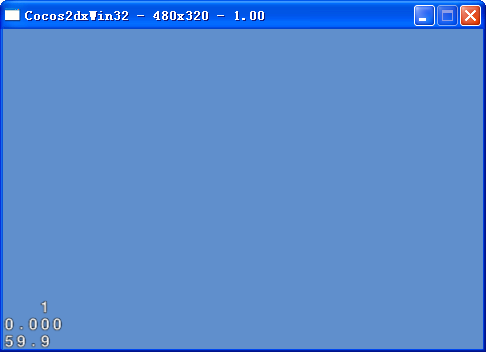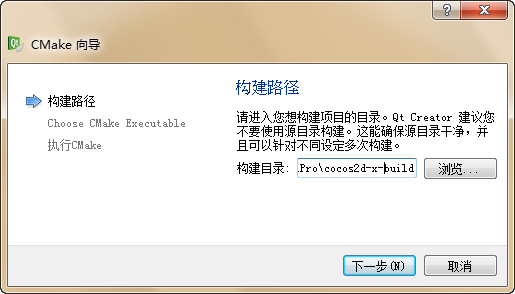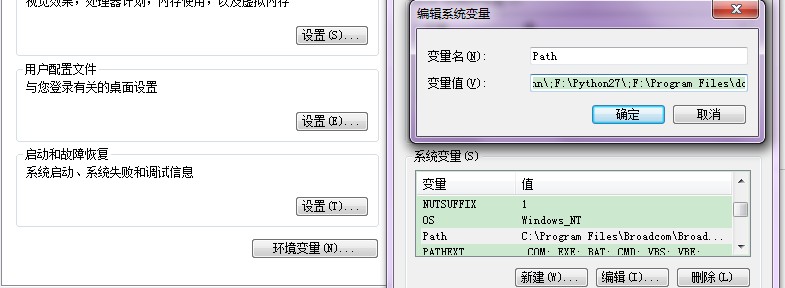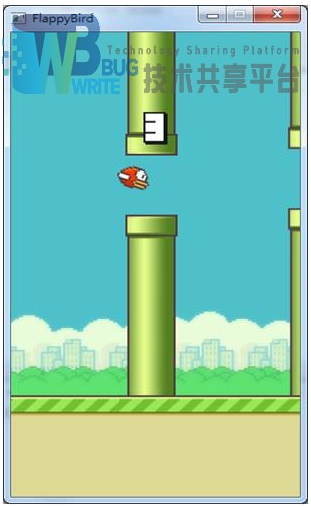运行截图
随机数
- 注意随机种子的设定需要在for循环的外面
- 用到了cocos2dx的 CCRANDOM_0_1
/** @def CCRANDOM_0_1 returns a random float between 0 and 1 */
#define CCRANDOM_0_1() ((float)rand()/RAND_MAX)
TIMEVAL psv;
gettimeofday(&psv,NULL);
// 初始化随机种子
// timeval是个结构体,里边有俩个变量,一个是以秒为单位的,一个是以微妙为单位的
unsigned rand_seed = (unsigned)(psv.tv_sec * 1000 + psv.tv_usec / 1000); //都转化为毫秒
srand(rand_seed);
for (int i = 0; i < N; i++)
{
int a = 0;
int b = visibleSize.width;
float xt = CCRANDOM_0_1() * (b - a + 1) + a;
a = 0;
b = visibleSize.height;
float yt = CCRANDOM_0_1() * (b - a + 1) + a;
vx[i] = origin.x + xt;
vy[i] = origin.y + yt;
labels[i] = Label::createWithSystemFont("*","Arial",24);
// position the label on the center of the screen
labels[i]->setPosition(Point(vx[i],vy[i]));
// add the label as a child to this layer
this->addChild(labels[i],1);
}
完整代码
.h
#ifndef __HELLOWORLD_SCENE_H__
#define __HELLOWORLD_SCENE_H__
#include <vector>
#include "cocos2d.h"
#define N 200
USING_NS_CC;
class HelloWorld : public cocos2d::Layer
{
public:
// there's no 'id' in cpp,so we recommend returning the class instance pointer
static cocos2d::Scene* createScene();
// Here's a difference. Method 'init' in cocos2d-x returns bool,instead of returning 'id' in cocos2d-iphone
virtual bool init();
// a selector callback
void menuCloseCallback(cocos2d::Ref* pSender);
// implement the "static create()" method manually
CREATE_FUNC(HelloWorld);
public:
virtual void update(float delta);
void menuStopCallback(cocos2d::Ref* pSender);
void menuSlowCallback(cocos2d::Ref* pSender);
void menuMidCallback(cocos2d::Ref* pSender);
void menuFastCallback(cocos2d::Ref* pSender);
MenuItemFont *stop;
//
MenuItemFont *slow;
//
MenuItemFont *mid;
//
MenuItemFont *fast;
public:
Size visibleSize;
Point origin;
Label* labels[N];
float speed;
float vx[N];
float vy[N];
};
#endif // __HELLOWORLD_SCENE_H__
.cpp
#include "HelloWorldScene.h"
#include <cstdlib>
#include <ctime>
USING_NS_CC;
Scene* HelloWorld::createScene()
{
// 'scene' is an autorelease object
auto scene = Scene::create();
// 'layer' is an autorelease object
auto layer = HelloWorld::create();
// add layer as a child to scene
scene->addChild(layer);
// return the scene
return scene;
}
// on "init" you need to initialize your instance
bool HelloWorld::init()
{
//////////////////////////////
// 1. super init first
if ( !Layer::init() )
{
return false;
}
visibleSize = Director::getInstance()->getVisibleSize();
origin = Director::getInstance()->getVisibleOrigin();
// add a label shows "Hello World"
// create and initialize a label
#if 0
//LabelTTF* label = LabelTTF::create("1","Arial",24);
Label* label = Label::createWithSystemFont("1",24);
// position the label on the center of the screen
label->setPosition(Point(origin.x + visibleSize.width/2,origin.y + visibleSize.height - label->getContentSize().height));
// add the label as a child to this layer
this->addChild(label,1);
#endif
TIMEVAL psv;
gettimeofday(&psv,NULL);
// 初始化随机种子
// timeval是个结构体,里边有俩个变量,一个是以秒为单位的,一个是以微妙为单位的
unsigned rand_seed = (unsigned)(psv.tv_sec * 1000 + psv.tv_usec / 1000); //都转化为毫秒
srand(rand_seed);
for (int i = 0; i < N; i++)
{
int a = 0;
int b = visibleSize.width;
float xt = CCRANDOM_0_1() * (b - a + 1) + a;
a = 0;
b = visibleSize.height;
float yt = CCRANDOM_0_1() * (b - a + 1) + a;
vx[i] = origin.x + xt;
vy[i] = origin.y + yt;
labels[i] = Label::createWithSystemFont("*",24);
// position the label on the center of the screen
labels[i]->setPosition(Point(vx[i],vy[i]));
// add the label as a child to this layer
this->addChild(labels[i],1);
}
speed = 1;
this->scheduleUpdate(); // 定时器
//
MenuItemFont::setFontSize(22);// 系统设定字体大小
stop = MenuItemFont::create("stop");
stop->setTarget(this,menu_selector(HelloWorld::menuStopCallback));
//
slow = MenuItemFont::create("slow");
slow->setColor(Color3B::RED);
slow->setTarget(this,menu_selector(HelloWorld::menuSlowCallback));
//
mid = MenuItemFont::create("mid");
mid->setTarget(this,menu_selector(HelloWorld::menuMidCallback));
//
fast = MenuItemFont::create("fast");
fast->setTarget(this,menu_selector(HelloWorld::menuFastCallback));
//创建一个菜单容器 把菜单栏目放上去
Menu *menu = Menu::create(stop,slow,mid,fast,NULL);
//显示菜单
this->addChild(menu);
//菜单的显示位置
menu->setPosition(Point(50,visibleSize.height - 100));
//设置栏目间的宽度距离
menu->alignItemsverticallyWithPadding(10.0);
return true;
}
void HelloWorld::update(float delta)
{
for (int i = 0; i < N; i++)
{
vy[i] -= speed;//2.0;
if (vy[i] <= 0)
{
int a = 0;
int b = visibleSize.width;
vx[i] = origin.x + CCRANDOM_0_1() * (b - a + 1) + a;
vy[i] = visibleSize.height;
}
labels[i]->setPosition(Point(vx[i],vy[i]));
}
}
// 改变下落的速度
void HelloWorld::menuStopCallback(cocos2d::Ref* pSender)
{
this->unscheduleUpdate();
speed = -1.0;
stop->setColor(Color3B::RED);
slow->setColor(Color3B::WHITE);
mid->setColor(Color3B::WHITE);
fast->setColor(Color3B::WHITE);
}
void HelloWorld::menuSlowCallback(cocos2d::Ref* pSender)
{
if (speed < 0)
this->scheduleUpdate();
speed = 1.0;
stop->setColor(Color3B::WHITE);
slow->setColor(Color3B::RED);
mid->setColor(Color3B::WHITE);
fast->setColor(Color3B::WHITE);
}
void HelloWorld::menuMidCallback(cocos2d::Ref* pSender)
{
if (speed < 0)
this->scheduleUpdate();
speed = 3.0;
stop->setColor(Color3B::WHITE);
slow->setColor(Color3B::WHITE);
mid->setColor(Color3B::RED);
fast->setColor(Color3B::WHITE);
}
void HelloWorld::menuFastCallback(cocos2d::Ref* pSender)
{
if (speed < 0)
this->scheduleUpdate();
speed = 6.0;
stop->setColor(Color3B::WHITE);
slow->setColor(Color3B::WHITE);
mid->setColor(Color3B::WHITE);
fast->setColor(Color3B::RED);
}
void HelloWorld::menuCloseCallback(Ref* pSender)
{
#if (CC_TARGET_PLATFORM == CC_PLATFORM_WP8) || (CC_TARGET_PLATFORM == CC_PLATFORM_WINRT)
MessageBox("You pressed the close button. Windows Store Apps do not implement a close button.","Alert");
return;
#endif
//Director::getInstance()->end();
speed = 10;
#if (CC_TARGET_PLATFORM == CC_PLATFORM_IOS)
exit(0);
#endif
}
粒子系统实现sNow
参考
cocos2dx中一些自定义的例子系统
http://www.2cto.com/kf/201409/333598.html
Particle System(粒子系统)讲解
http://www.cnblogs.com/shangdahao/archive/2012/04/14/2447571.html
bg.png
sNow.png
#include "HelloWorldScene.h"
#include <cstdlib>
#include <ctime>
USING_NS_CC;
Scene* HelloWorld::createScene()
{
// 'scene' is an autorelease object
auto scene = Scene::create();
// 'layer' is an autorelease object
auto layer = HelloWorld::create();
// add layer as a child to scene
scene->addChild(layer);
// return the scene
return scene;
}
// on "init" you need to initialize your instance
bool HelloWorld::init()
{
//////////////////////////////
// 1. super init first
if ( !Layer::init() )
{
return false;
}
visibleSize = Director::getInstance()->getVisibleSize();
origin = Director::getInstance()->getVisibleOrigin();
auto bg = Sprite::create("bg.png");
bg->setPosition(Point(visibleSize.width / 2,visibleSize.height / 2));
this->addChild(bg);
#if 0
ParticleSystem* ps = ParticleSNow::createWithTotalParticles(9999);
//ParticleSystem* ps = ParticleSNow::create();
ps->setTexture(Director::getInstance()->getTextureCache()->addImage("sNow.png"));
ps->setPosition(Point(visibleSize.width/2,visibleSize.height + 10));//生成的雪花从这个坐标往下落
//ps->setEmissionRate(10);
ps->setSpeed(200);
ps->setLife(10);
this->addChild(ps);
#endif
#if 1
auto particleSystem = ParticleSystemQuad::createWithTotalParticles(200);
//设置雪花粒子纹理图片
particleSystem->setTexture(TextureCache::getInstance()->addImage("sNow.png"));
//设置发射粒子的持续时间-1表示永远持续
particleSystem->setDuration(-1);
//这个点是相对发射点,x正方向为右,y正方向为上,可以设置发射的方向
particleSystem->setGravity(Point(-10,-20));
//设置角度以及偏差
particleSystem->setAngle(90);
particleSystem->setAngleVar(360);
//设置径向加速度以及偏差
particleSystem->seTradialAccel(10);
particleSystem->seTradialAccelVar(0);
//设置粒子的切向加速度以及偏差
particleSystem->setTangentialAccel(30);
particleSystem->setTangentialAccelVar(30);
// 设置粒子初始化位置偏差
//particleSystem->setPosition(CCPoint(400,500));
particleSystem->setPosVar(Point(400,0));
//设置粒子生命期以及偏差
particleSystem->setLife(4);
particleSystem->setLifeVar(2);
//设置粒子开始时候旋转角度以及偏差
particleSystem->setStartSpin(30);
particleSystem->setStartSpinVar(60);
//设置结束时候的旋转角度以及偏差
particleSystem->setEndSpin(60);
particleSystem->setEndSpinVar(60);
//设置开始时候的颜色以及偏差
particleSystem->setStartColor(Color4F(1,1,1));
//设置结束时候的颜色以及偏差
particleSystem->setEndColor(Color4F(0.9,0.9,1));
//设置开始时候粒子大小以及偏差
particleSystem->setStartSize(30);
particleSystem->setStartSizeVar(0);
//设置粒子结束时候大小以及偏差
particleSystem->setEndSize(20.0f);
particleSystem->setEndSizeVar(0);
//设置每秒钟产生粒子的数量
particleSystem->setEmissionRate(100);
// 粒子系统位置
particleSystem->setPosition(Point(visibleSize.width * 0.75,visibleSize.height + 50));
this->addChild(particleSystem);
#endif
return true;
}
void HelloWorld::update(float delta)
{
}
版权声明:本文内容由互联网用户自发贡献,该文观点与技术仅代表作者本人。本站仅提供信息存储空间服务,不拥有所有权,不承担相关法律责任。如发现本站有涉嫌侵权/违法违规的内容, 请发送邮件至 dio@foxmail.com 举报,一经查实,本站将立刻删除。












